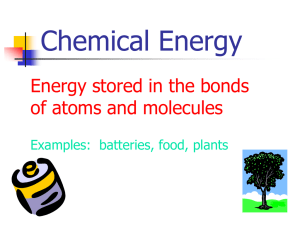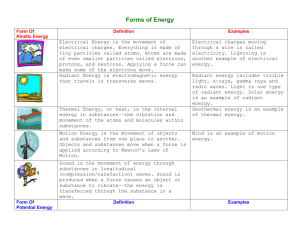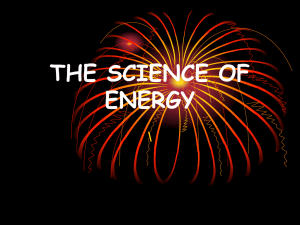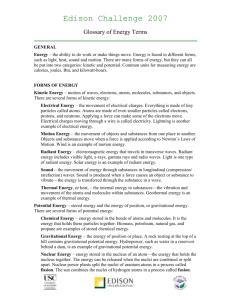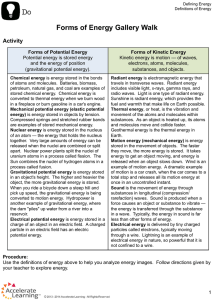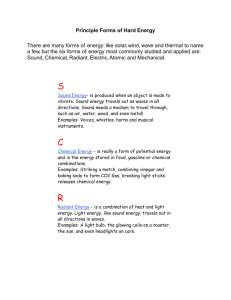The Science of Energy
advertisement
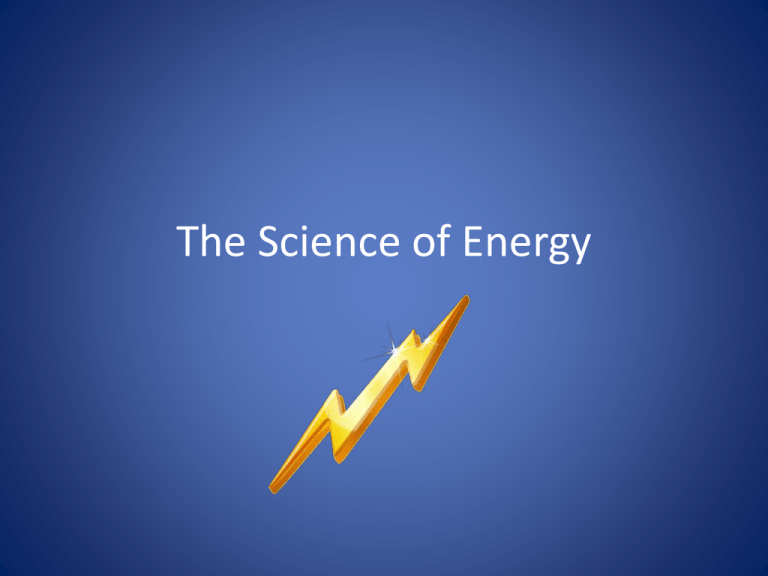
The Science of Energy What energy helps us do 1. 2. 3. 4. Make things move Make heat Make light Make technology work (run electrical devices) 5. Make things grow Forms of energy •All energy falls under two categories: Potential Energy Potential energy is stored energy and the energy of position (gravitational). Chemical Energy • Chemical energy is the energy stored in the bonds of atoms and molecules. • Biomass • Petroleum • Natural gas • Propane • Coal Nuclear Energy • Nuclear energy is the energy stored in the nucleus of an atom. • It is the energy that holds the nucleus together. • The nucleus of a uranium atom is an example of nuclear energy. Stored Mechanical Energy • Energy stored in objects or substances by the application of force. • Examples: – Compressed metal springs – Stretched rubber bands Gravitational Energy • The energy of place or position • Examples: – Water held in a reservoir behind a hydropower dam – When the water in the reservoir is released to spin the turbines, it becomes motion energy Kinetic Energy • Kinetic energy is motion. • It is the motion of: –Waves –Electrons –Atoms –Molecules –Substances Radiant Energy • Electromagentic energy that travels in tranverse waves. • Radiant includes: – Visible light – X-rays – Gamma rays – Radio waves – Example: solar energy Thermal Energy • The internal energy in substances (heat) • It is vibration and movement of atoms and molecules within substances. • Example: – Geothermal energy Motion • The movement of objects or substances from one place to another is motion. • Example – Wind Sound • The movement of energy through objects or substances in longitudinal (compression/rarefaction) waves. Electrical Energy • The movement of electrons • Examples: – Lightning – Electricity Energy Flows • Where does the body get the energy to shake a bottle? •How is energy stored in food? •What type of energy produced the radiant energy from the sun? •All energy can be traced back to what type? •If the source of energy must be burned, then how is it stored? Look at the chart: • Calculate the percentage of the nation’s energy use that each form of energy provides: Percentage of US Energy Consumption: • Chemical (petroleum, natural gas, coal, propane, biomass 88.2% • Nuclear 8.2% • Motion 3.15% • Thermal 0.35% • Radiant (solar) 0.1%
